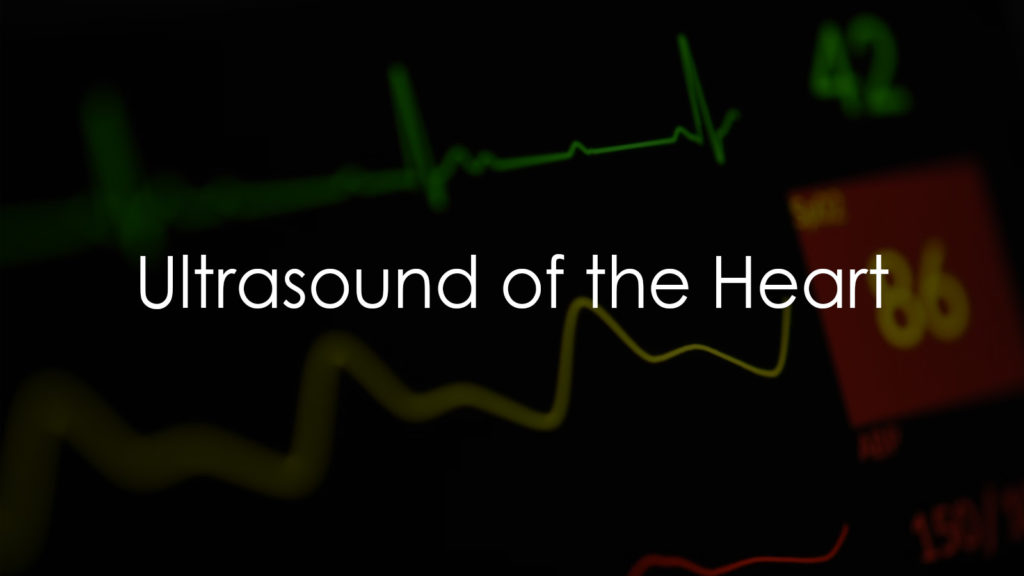An ultrasound of the heart, also known as an echocardiogram or simply echo, is a non-invasive diagnostic test that uses high-frequency sound waves to create detailed images of the heart’s structure and function. This test is essential for evaluating heart conditions, assessing cardiac function, and guiding treatment decisions. This article will explore the purpose of an echocardiogram, the procedure for conducting it, the interpretation of results, and important considerations when undergoing this test.

Why is it needed?
An echocardiogram is necessary for several critical reasons:
- Diagnosing Heart Conditions: It helps identify conditions such as heart valve disease, congenital heart defects, cardiomyopathy, and pericardial disease.
- Evaluating Symptoms: It is used to investigate symptoms like chest pain, shortness of breath, palpitations, and fatigue.
- Monitoring Heart Function: Regular echocardiograms can monitor the progression of heart conditions and the effectiveness of treatments.
- Assessing Heart Health: It provides detailed information about heart size, structure, and function, including the pumping efficiency and blood flow.
- Guiding Treatment: It helps in planning surgical or catheter-based interventions and monitoring post-operative outcomes.
There are several types of echocardiograms, each with specific purposes and procedures:
Transthoracic Echocardiogram (TTE)
- Description: The most common type of echocardiogram, performed by placing a transducer on the chest.
- Purpose: Provides detailed images of the heart’s structure and function.
- Procedure: Non-invasive and painless.
Transesophageal Echocardiogram (TEE)
- Description: An ultrasound transducer is passed down the esophagus to get closer to the heart.
- Purpose: Provides clearer images of the heart, especially the back structures, and is often used when detailed images are needed.
- Procedure: Requires sedation and fasting before the test.
Stress Echocardiogram
- Description: Performed before and after exercise or medication-induced stress to evaluate heart function under stress.
- Purpose: Assesses how well the heart handles stress and helps diagnose coronary artery disease.
- Procedure: Can involve physical exercise on a treadmill or stationary bike, or the administration of medication that mimics exercise.
Doppler Echocardiogram
- Description: Uses Doppler technology to measure the speed and direction of blood flow within the heart.
- Purpose: Detects blood flow abnormalities and measures blood pressure within the heart.
- Procedure: Often combined with TTE or TEE.
Procedure for taking the test
The procedure for conducting an echocardiogram typically involves the following steps:
- Preparation: Depending on the type of echocardiogram, specific instructions may include fasting for a few hours before the test (especially for TEE) or wearing comfortable clothing for stress echo.
- Positioning: The patient lies on an examination table, usually on their left side, to get the best images of the heart.
- Application of Gel: A clear, water-based gel is applied to the chest to help the transducer make secure contact and transmit sound waves efficiently.
- Scanning: The sonographer moves the transducer over the chest to capture images of the heart from different angles. For TEE, the transducer is passed down the esophagus.
- Duration: The procedure typically takes 30-60 minutes, but it may vary depending on the type of echo and the patient’s condition.
- Completion: After the scan, the gel is wiped off, and the patient can usually resume normal activities immediately, except for TEE, which requires recovery time from sedation.
Interpretation of Results
Interpreting echocardiogram results involves examining the images for abnormalities in heart structure and function. Here are some key findings and their potential implications:
Heart Chambers
- Normal: Proper size and function of the atria and ventricles.
- Abnormal: Enlarged chambers (dilated cardiomyopathy), thickened walls (hypertrophic cardiomyopathy), or poor contraction (heart failure).
Heart Valves
- Normal: Proper opening and closing of the valves without leakage.
- Abnormal: Stenosis (narrowing), regurgitation (leakage), or prolapse (improper closure).
Blood Flow
- Normal: Smooth, unidirectional blood flow.
- Abnormal: Turbulent flow (valve disease), abnormal pressures (pulmonary hypertension), or backflow (regurgitation).
Heart Muscle (Myocardium)
- Normal: Uniform thickness and contraction.
- Abnormal: Areas of decreased movement (ischemia), thickened walls (hypertrophy), or scars (previous heart attack).
Pericardium
- Normal: No fluid accumulation.
- Abnormal: Fluid accumulation (pericardial effusion), thickening (pericarditis), or constriction (constrictive pericarditis).
Important Considerations
When undergoing an echocardiogram, several factors should be taken into account:
- Preparation: Follow specific instructions given by the healthcare provider, especially for TEE and stress echocardiograms.
- Comfort: The procedure is generally painless, but lying still and holding certain positions might be slightly uncomfortable.
- Accuracy: Echocardiograms are highly accurate, but sometimes additional tests like MRI or CT may be required for further evaluation.
- Follow-Up: Abnormal findings may require additional testing or interventions, such as cardiac catheterization, MRI, or CT.
Conclusion
An echocardiogram is a vital diagnostic tool that provides valuable information about the heart’s structure and function. It is non-invasive, safe, and widely accessible, making it an essential procedure in modern cardiology. Understanding the purpose of the test, the procedure involved, and the interpretation of results can help patients better prepare for the examination and understand the findings. Regular echocardiograms, particularly for individuals with heart conditions or symptoms, can significantly aid in early diagnosis and effective management of various cardiovascular diseases.